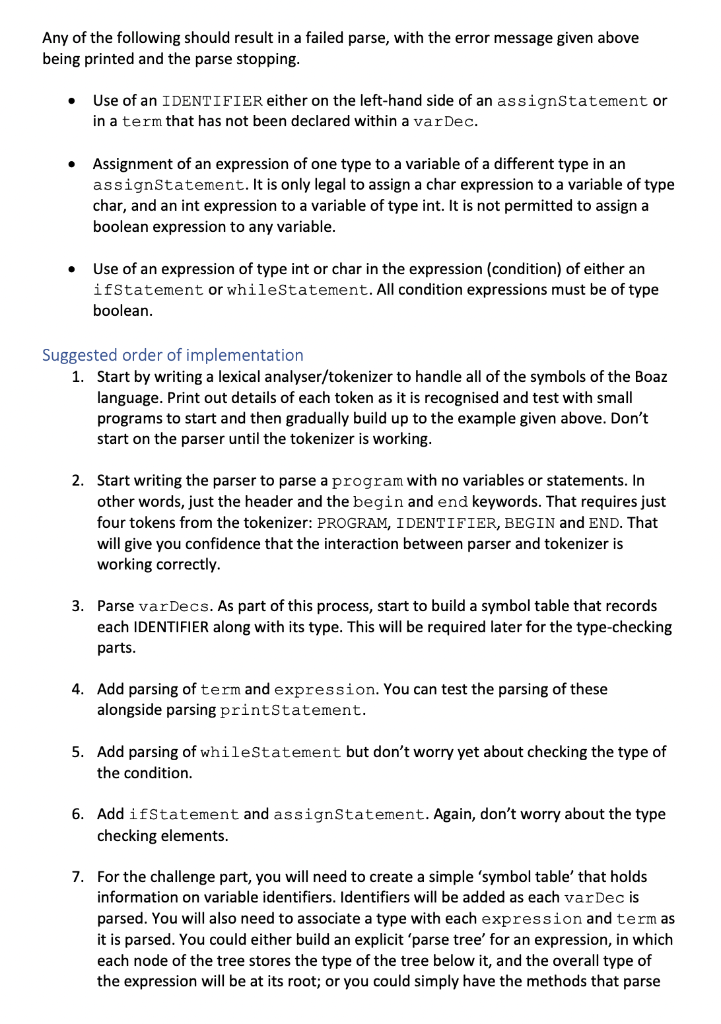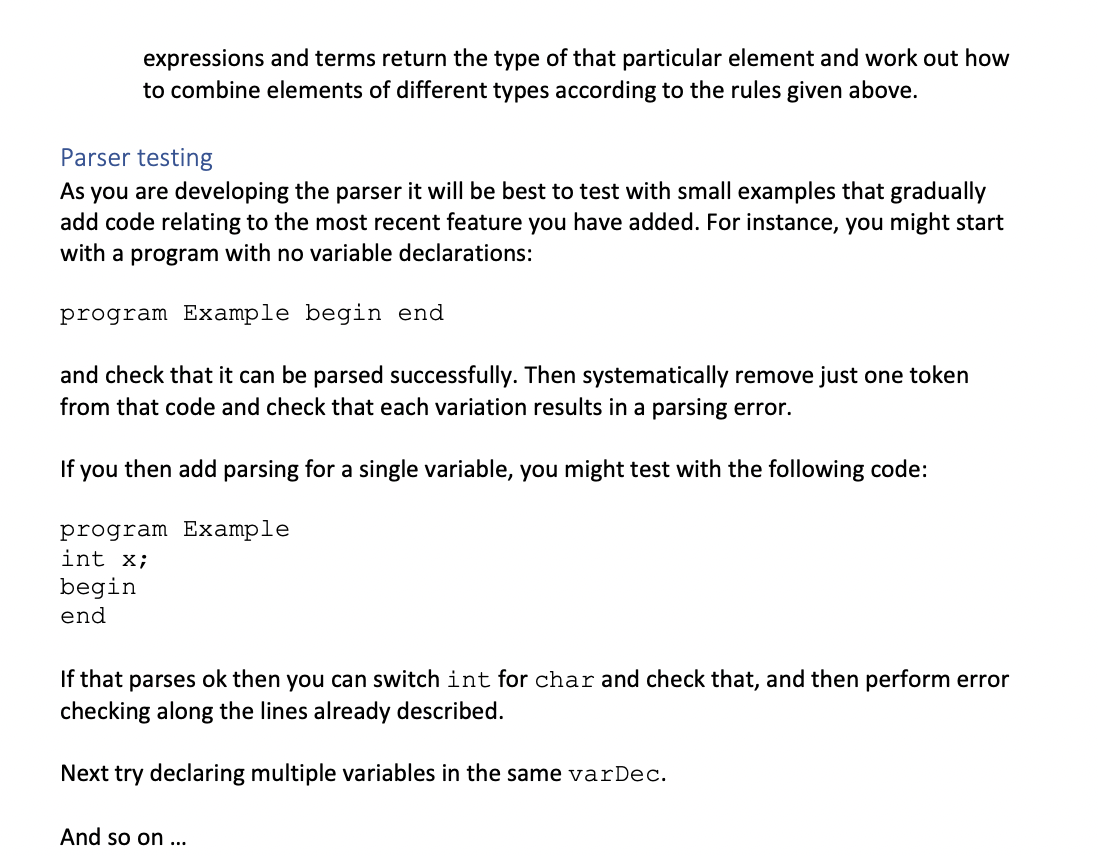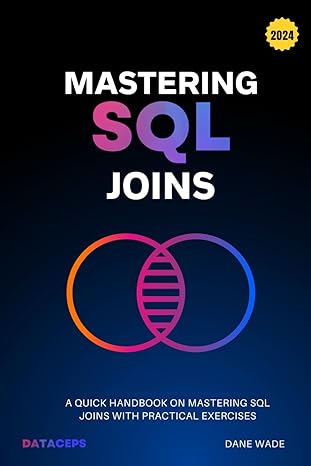Question
Java implementation Introduction This assignment is designed to provide you with a practical understanding of the task of writing the syntax analysis parts of a
Java implementation
Introduction
This assignment is designed to provide you with a practical understanding of the task of writing the syntax analysis parts of a compiler for a high-level language called Boaz. Boaz is a language designed by me for this particular assessment so you should not expect to find any additional information about it elsewhere on the Web/Internet. This document is the definitive definition/description of Boaz.
Requirements
The main requirement of this assessment is to write a lexical analyser and recursive-descent parser for the language defined in this document. Boaz source files are stored in a text file whose name ends in a '.boaz' suffix. Your program must analyse a single Boaz source file named as its only command-line argument. Your program will only be tested with files with the correct suffix.
The grammar to which valid programs must conform is given below. There is a further challenge element, concerned with type checking, worth 20% of the marks.
The program must not output anything other than a single diagnostic message on standard output at the end of the parse. The message must be:
ok
for a successful parse or
error
for an unsuccessful parse.
A single error in the source file should cause the parser to output the error notification and stop the parse. No error recovery is required. Note that the message must be written to standard output (System.out in Java) regardless of whether the parse is successful or not.





Step by Step Solution
There are 3 Steps involved in it
Step: 1

Get Instant Access to Expert-Tailored Solutions
See step-by-step solutions with expert insights and AI powered tools for academic success
Step: 2

Step: 3

Ace Your Homework with AI
Get the answers you need in no time with our AI-driven, step-by-step assistance
Get Started


